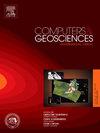Introducing PyFaultSlip: A free and open-source tool for the assessment of induced fault slip hazards from deep fluid injection
IF 4.2
2区 地球科学
Q1 COMPUTER SCIENCE, INTERDISCIPLINARY APPLICATIONS
引用次数: 0
Abstract
Induced fault slip is a significant hazard incurred by deep fluid injection operations and is inferred to be the source of recent elevated seismicity in the U.S. midcontinent. Deep fluid injection is commonly used for disposal of wastewater associated with oil and gas development and other industrial activities, enhanced oil recovery (EOR), and carbon capture and storage (CCS). However, easy-to-use tools to investigate hazards associated with disposal are lacking. Here, we present pyFaultSlip, a modular, free, and open-source tool written in Python to assess the likelihood of induced fault slip, using both 2D and 3D mapped geometries. We adopt two different approaches to assessing fault slip tendency, a ‘deterministic’ model that does not consider input uncertainty, and a ‘probabilistic’ model that uses a Monte Carlo approach to assess uncertainty. We show examples using 2D and 3D fault data in Oklahoma and Kansas. This tool is geared towards providing straightforward results that can directly communicate the likelihood of induced slip occurring on specific faults to researchers, operators, regulators, and other stakeholders of deep fluid injection projects.
求助全文
约1分钟内获得全文
求助全文
来源期刊

Computers & Geosciences
地学-地球科学综合
CiteScore
9.30
自引率
6.80%
发文量
164
审稿时长
3.4 months
期刊介绍:
Computers & Geosciences publishes high impact, original research at the interface between Computer Sciences and Geosciences. Publications should apply modern computer science paradigms, whether computational or informatics-based, to address problems in the geosciences.
 求助内容:
求助内容: 应助结果提醒方式:
应助结果提醒方式:


